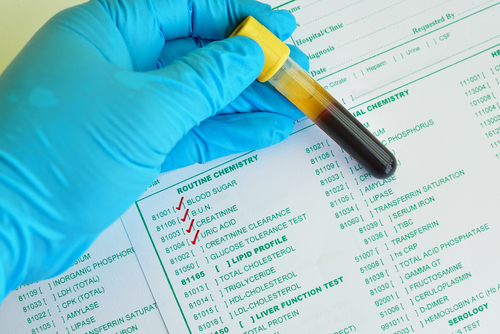Researchers from Canada showed that using serum creatinine (SCr) values obtained at the time of hospital admission is a reliable method for assessment of acute kidney injury (AKI).
In the study “Diagnosis and outcomes of acute kidney injury using surrogate and imputation methods for missing preadmission creatinine values,” published in BMC Nephrology, the authors aimed to find a surrogate method to determine SCr baseline levels that can allow more accurate assessment of AKI diagnosis and outcomes.
Diagnoses and predictions of AKI disease outcomes rely on the calculation of the glomerular filtration rate (GFR). Such determination requires patients’ pre-admission SCr values. However, these parameters are frequently missing and are a common obstacle to evaluate this condition.
In the study, the authors evaluated four alternative methods to determine SCr values and compared them to the standard and most reliable method, which is blood measurement before hospital admission. They used an estimation method based on the Modification of Diet in Renal Disease (MDRD) equation study, another based on the Chronic Kidney Disease Epidemiology Collaboration (CKD-EPI) equation, and they also measured minimal SCr over two weeks after intensive care unit admission, and first SCr values measured at hospital admission.
A total of 1,001 patients were included in the study, of which 498 had pre-admission SCr values. According to these values, 25.1% of the patients were diagnosed with AKI.
Using estimated values based on the different surrogate methods led to an overestimation of AKI incidence. Minimal SCr estimated an AKI incidence of 43.2%, MDRD estimated 26.7%, whereas CKD-EPI estimated an incidence of 27.1%. Only the first SCr method showed a more specific response, calculating AKI diagnosis incidence of 22.5%.
“Our results show that measures to estimate baseline SCr either underestimate or overestimate AKI incidence, which could affect outcomes associated with presumed AKI,” the authors wrote.
The first SCr method also was found to estimate more accurately the kidney function recovery of patients after hospital discharge. According to pre-admission SCr, 88% of the patients recovered their kidney function after at least three months. First SCr method calculated that 89.4% of the patients would recover their renal function, whereas the remaining methods were associated with much lower renal recovery estimations (minimal SCr – 59% percent, MDRD – 63.3%, and CKD-EPI – 59.3%).
A more detailed analysis showed that several factors were affecting the classification of the patients in the different methods, including age, gender, and incidence of hypertension or heart failure.
“Our results concur with the recommendation from the European Renal Best Practice position statement on the KDIGO guidelines to use the first SCr of the episode when baseline SCr is missing,” they wrote.
Due to the different responses of the analyzed methods, the authors highlighted the need of more studies to confirm the effect of using surrogate methods for determination of baseline SCr on AKI diagnosis and outcomes.

